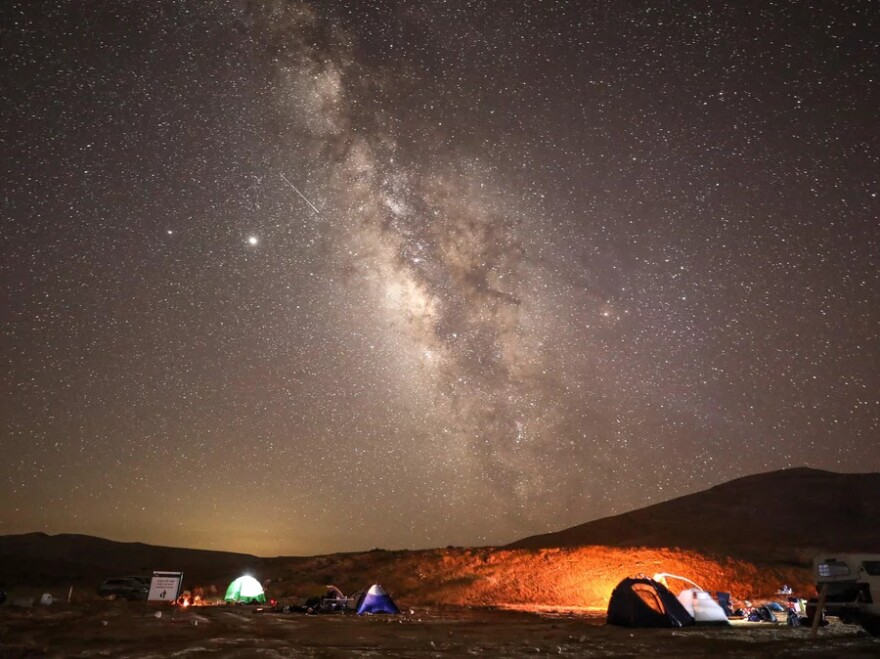With our free press under threat and federal funding for public media gone, your support matters more than ever. Help keep the LAist newsroom strong, become a monthly member or increase your support today.
Where to watch the Perseid meteor shower near LA

The Perseid meteor shower is peaking this weekend and you don't have to travel all that far from Los Angeles to see what's going to be one of the best celestial events of the year.
"The Perseids will be the shower to view," said Bill Cooke, the lead for NASA's Meteoroid Environment Office. "The Geminids are the strongest shower, but we're going to have a lot of moonlight interference this year."
The peak of the shower will start at 11 p.m. Sunday and ramp up into the early morning hours of Monday.

To watch, head to the darkest spot you can find (more on that below), lay on your back, stare straight up at the sky for 45 minutes to give your eyes time to adjust, and if conditions are perfect you could see as many as 60 meteors per hour. The show comes from chunks of the Swift-Tuttle comet burning up in our atmosphere.
How dark does it have to be?
The moon should set around midnight. The darker the spot, the better viewing experience you'll have.
The Bortle Dark Sky Scale is a classification system that indicates how much light pollution there is in any given area, and to see the Perseids, ideally you'll find a spot that's Bortle class 4 or lower. You might see some meteors in an area that's Bortle class 5, but viewing won't be great.

Try heading high up into the mountains or deep into the desert to escape city lights.
Nearby spots
- San Gabriel Mountains: They're decently accessible and fairly high up, but many spots you may stop at are still Bortle 5 due to the light pollution from Los Angeles. Meaning, they're often not going to be great viewing spots. Still, you may see some meteors. We mentioned Mt. Wilson as a potential location to visit in an earlier version of this post, but those operating the observatory pointed out that they shut the gates in the afternoon.
- The Santa Monica Mountains: There are a few dark spots that you may be able to see meteors from, like the Lois Ewen Overlook at the top of Stunt Road.
- Los Padres National Forest: There are a number of Bortle class 3 and 4 locations high up in the forest, including Mt. Pinos, which has camp sites. A wonderful option.
- Mojave Desert: Just pick a spot that's dark and pull off on the side of the road (prioritize safety of course). There are a ton of places that are Bortle class 4.
Use this light pollution map to find a dark spot near you.








